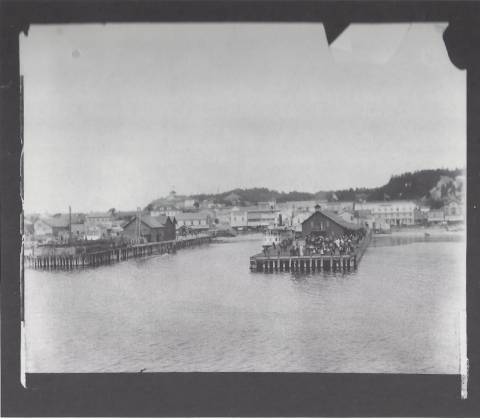Although the British built Fort Mackinac to protect their settlement from attack by French-Canadians and native tribes, the fort was never attacked during the American Revolutionary War. The entire Straits area was officially acquired by the United States through the Treaty of Paris in 1783. However, much of the British forces did not leave the Great Lakes area until after 1794, when Jay's Treaty established U.S. sovereignty over the Northwest Territory During the War of 1812, the British captured the fort in the first battle of the conflict because the Americans had not yet heard that war had been declared. In 1814, the Americans and British fought a second battle on the north side of the island. The American second-in-command, Major Andrew Hunter Holmes, was killed and the Americans failed to recapture the island. Despite this outcome, the Treaty of Ghent of 1815 forced the British to return the island and surrounding mainland to the U.S. The United States reoccupied Fort Mackinac, and renamed Fort George as Fort Holmes, after Major Holmes. The fort was used as a prison for three Confederate sympathizers.
John Jacob Astor's American Fur Company was centered on Mackinac Island after the War of 1812 and exported beaver pelts for thirty years. By the middle of the 19th century, commercial fishing for whitefish and lake trout began to replace the fur trade as the island's primary industry. Following the Civil War, the island became a popular tourist destination for residents of cities on the Great Lakes. Much of the federal land on Mackinac Island was designated as the second national park, Mackinac National Park, in 1875, just three years after Yellowstone was named as the first national park. To accommodate an influx of tourists and sport fishermen in the 1880s, the boat and railroad companies built hotels, including the Grand Hotel. Restaurants and Souvenir shops sprang up as a way for island residents to profit from the tourists. Many wealthy industrialists built summer "cottages" along the island's bluffs for extended stays. And now that the Federal government has left the island, all of the federal land has been given to the state of Michigan. Fort Mackinac is become Michigan's first state park.
